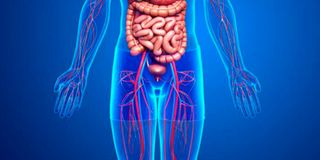Scientists develop stickers that could see your internal organs

What you need to know:
- From the stickers' images, the researchers were able to observe the changing diameter of major blood vessels when seated versus when standing.
- The stickers also captured details of deeper organs, such as how the heart changes shape as it exerts during exercise.
Researchers have developed a stamp-sized sticker that can continuously capture images of internal organs for 48 hours.
When clinicians need live images of a patient's internal organs, they often turn to ultrasound imaging for a safe and non-invasive window into the body's workings.
To capture these insightful images, trained technicians manipulate ultrasound wands and probes to direct sound waves into the body.
These waves reflect back out and are used to produce high-resolution images of a patient's heart, lungs, and other deep organs.
Currently, ultrasounds require bulky and specialised equipment only available in hospitals and doctors' offices.
However, the new design developed by engineers from the Massachusetts Institute of Technology(MIT) might make the technology as wearable and accessible as buying.
The stickers, measuring two by three centimetres, adhere directly to the skin and could enable diagnostic and monitoring tools for various diseases, including some heart conditions, pregnancy-related complications, and several types of cancers.
"We imagine we could have a box of stickers, each designed to image a different body location. We believe this represents a breakthrough in wearable devices and medical imaging," the study's senior author, Xuanhe Zhao, professor of mechanical engineering and civil and environmental engineering at MIT, said.
The patch was tested on people doing activities such as jogging, sitting, standing and biking.
The engineers presented the design for the new ultrasound sticker in a paper published on July 28 in the journal Science.
From the stickers' images, the team was able to observe the changing diameter of major blood vessels when seated versus when standing.
The stickers also captured details of deeper organs, such as how the heart changes shape as it exerts during exercise.
They were also able to watch the stomach distend and then shrink back as volunteers drank and later passed juice out of their system. Also, when some volunteers lifted weights, the team detected bright patterns in underlying muscles, signalling temporary micro damage.
While the devices currently need to be connected to transducers to produce clear images, the team is working on creating wireless versions that would allow patients to wear the devices even at home.
"We envision a few patches adhered to different locations on the body, and the patches would communicate with your cellphone, where AI algorithms would analyse the images on demand. We believe we've opened a new era of wearable imaging: With a few patches on your body, you could see your internal organs," said Prof Zhao.




